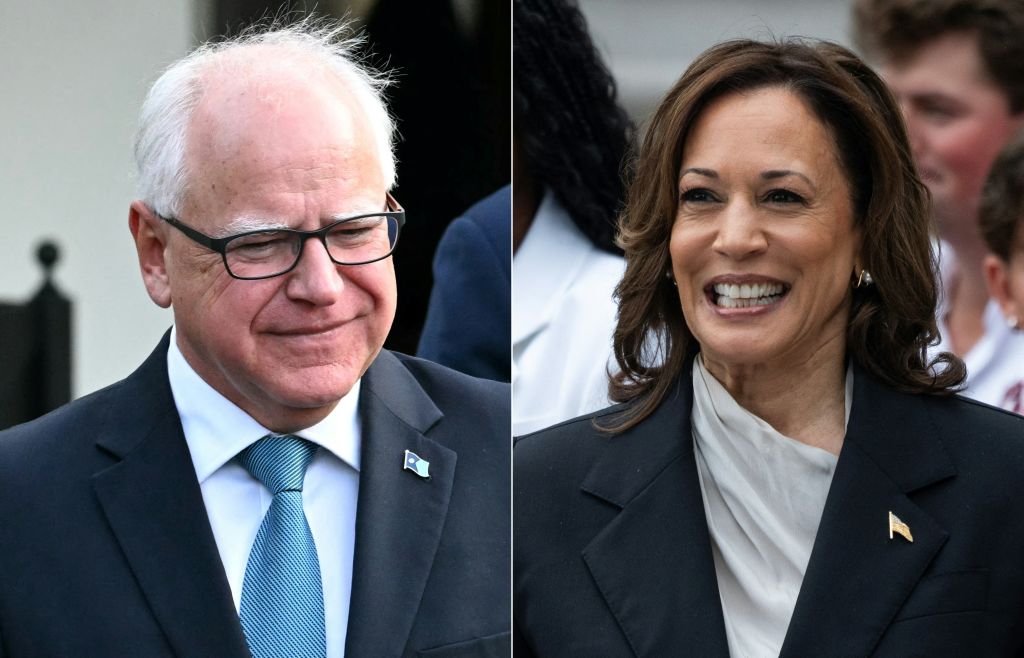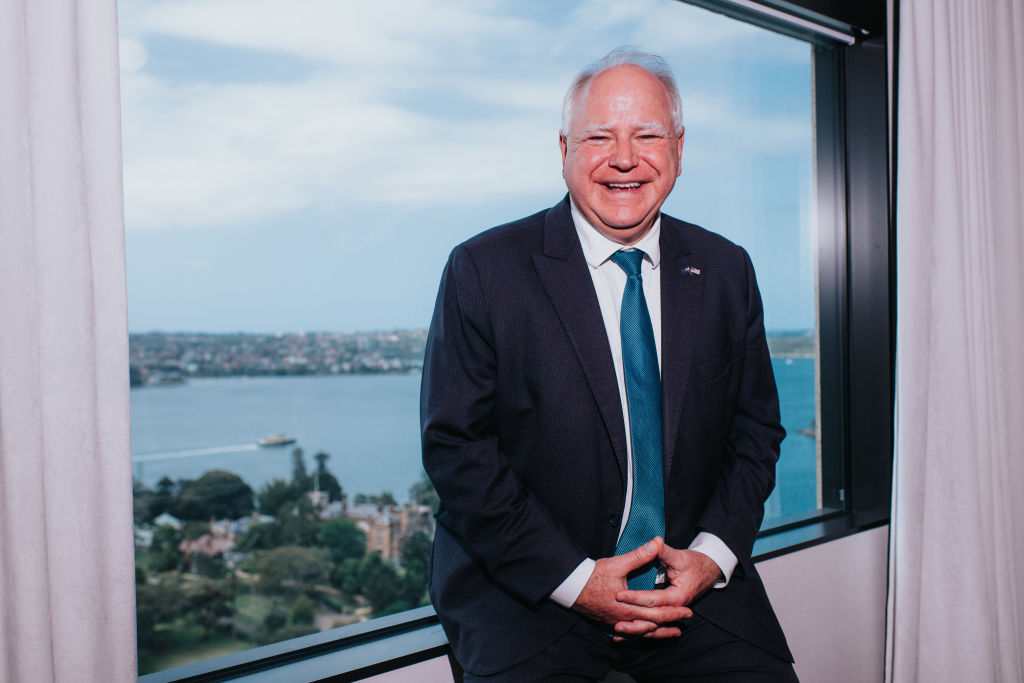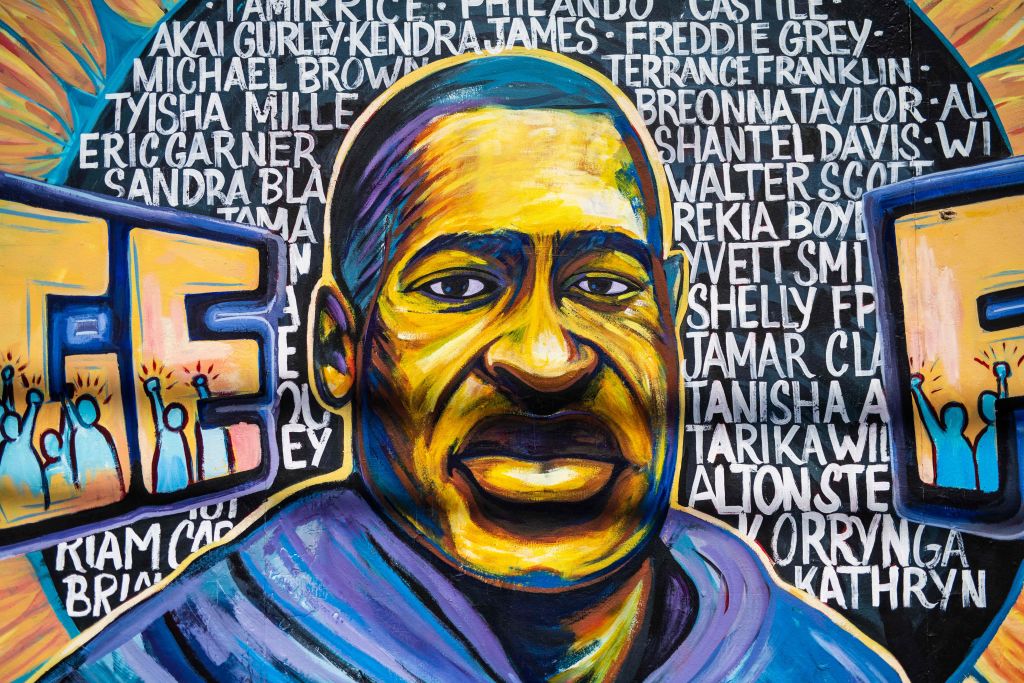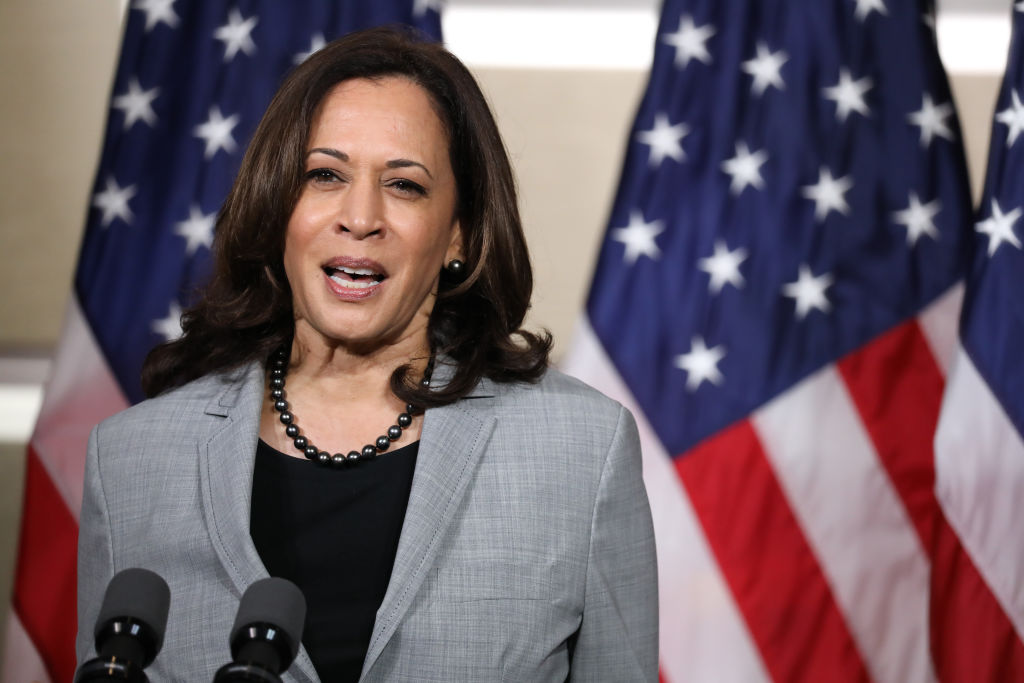Kamala Harris Selects Tim Walz As Her VP
Kamala Harris Selecting Tim Walz Is A Major Win For People Who Value Humanity Generally, But Black People Can’t Take Eyes Off The Prize

Source: JIM WATSONCHRIS KLEPONIS / Getty
After a reportedly heated few days of intra-party wrangling over whom Kamala Harris should select as her running mate, she announced this morning that Tim Walz, Governor of Minnesota, was her choice for the second-highest post in the nation. Choosing Walz to run alongside her is a major victory for those who value human rights and democracy.
Moreover, it’s a testament to the growing power of a new generation of progressive advocates in and associated with the Democratic Party, like the Movement Voter Project. Co-founded and led by Billy Wimsatt, they rallied hard for Gov. Walz, pushing Ms. Harris to demonstrate that she was truly about a full-scale shift in American policy, which in the last several years has been and continues to be guided by authoritarians and liars who have proudly defined themselves by the politics of exclusion and anti-humanism:
In a letter shared by Wimsatt with the New York Times last week, Wimsatt hailed Gov. Walz as “…the perfect Harris VP unicorn for this moment…”
While Black Voters Matter (BVM), an organization that encourages Black voter participation and builds Black electoral power [disclosure: BVM works in partnership with NewsOne], did not officially endorse any of the vice presidential prospects. But its executive director and co-founder, Cliff Albright, said last night in phone call last night that he’s been personally very open about wanting Walz to be the choice.

Source: Fairfax Media / Getty
So Who Is Gov. Walz And Why Did So Many People Push For Him?
Walz, 60, the chair of the of the National Democratic Governors Association, and the married father of two, was born in Nebraska, but moved to Minnesota, the state he represented Congress for some 12 years before moving into the governor’s mansion.
His supporters have leaned into his rural and working-class beginnings–a direct challenge to Trump’s VP pick being the singular voice for the Rust Belt. Because while Minnesota is solidly blue, Walz carries sway over states that are in play, including Michigan, Pennsylvania and Wisconsin–as well as independents and working class voters.
More, Walz has bonafide amongst vets, another important voting bloc: a former National Guardsman who has been deployed domestically and abroad–and left Congress as the highest serving non-commissioned officer–has supported some deeply meaningful legislation in his state. He expanded voting rights in Minnesota to include 55,000 formerly incarcerated people, advocated for and won the universal free public school breakfast and lunch program for students, enshrined abortion rights into Minnesota’s state law, and protected gender-affirming healthcare.
During a recent CNN interview, Walz gave a tongue-in-cheek response to right-wing critics complaining about his food initiatives:
“What a monster [I am]! Kids are eating and having full bellies so they can go learn, and women are making their own healthcare decisions.”

A portrait of George Floyd is painted on the wall of Unity Foods in Minneapolis, Minnesota, on April 10, 2023. Source: STEPHEN MATUREN / Getty
The Murder of George Floyd
In the wake of former Minneapolis cop, now convicted murderer Derek Chauvin publicly choking unarmed George Floyd for over nine minutes, killing him, the country went up in protests, starting in Minneapolis-St. Paul and expanding to all 50 states. It was the largest and most sustained protest in modern history. There may have been little love lost between Black protestors and Minneapolis’s political leads, including the Governor’s–especially after the National Guard was deployed reportedly in response to what was called protestor violence.
But it’s also long been acknowledged that, in the main, protesters were peaceful, and those who participated in the most dangerous actions were from outside the members of the Movement for Black Lives–and perhaps even people who sought to instigate a brutal response on the constitutionally protected gathering of people. Walz was reelected as governor two years later with strong Black community support; the loudest criticism he faced was from the state and other Republicans who wanted him to be far harsher with protestors—something perhaps more akin to what America saw done to their students post the October 7th attack on Israel by Hamas.

(L-R) Minnesota Governor Tim Walz greets US Vice President Kamala Harris as she arrives at the Minneapolis-St. Paul International Airport in Saint Paul, Minnesota, on March 14, 2024. Harris toured an abortion clinic, highlighting a key election issue in what US media reported was the first such visit by a president or vice president. Source: STEPHEN MATUREN / Getty
What About the Other White Dudes for Kamala?
Walz likely beat out the other closest contender: Gov. Josh Shapiro, of Pennsylvania whom Wimsatt along with a roster of Arab Americans, young Americans of all races would risk ” …significantly depressing enthusiasm for the Harris ticket among key constituencies of young voters, Arab and Muslim voters, and to some degree labor.”
The nod to labor by Wimsatt likely was the opposition another top contender, Sen. Mark Kelly of Arizona faced. Not considered a friend of workers–as Walz is–Kelly did not have the support of the UAW. Their leader openly lobbied against the Arizona senator being chosen for VP.
But no criticism came faster and harder than that against Shapiro. Here’s why:
While Shapiro has disavowed the leadership of internationally accused–and sought–war criminal and Israeli Prime Minister Benjamin Netanyahu, his failure to challenge the years-long assaults on Palestinians and the ways in which American businesses are held hostage to either support Israel or be unable to operate, earned him the moniker #GenocideJosh in recent months. Of late, some have said using the term was anti-Semitic because Shapiro is Jewish. But it’s hard to make that make sense given that Catholic Joe Biden is for whom the moniker was created.
Moreover, Shapiro’s encouragement and approval of law enforcement’s attacks on U Penn students who were peacefully protesting the genocide against Palestinians, have been criticized by many, including faculty, not only because acts of violence there across the country did not come from the protestors, but also because of the underlying reason for the protests.
Boston University’s School of Law reported in June that since October 7, 2023, the Israeli government has:
- Killed more than 34,000 mostly non-combatant Palestinians, including over 14,000 children;
- Grievously injured close to 100,000 Palestinians;
- Forcibly displaced fully 75 percent of Gaza’s citizenry alone and in direct violation of the Geneva Conventions;
- Deliberately withheld food, water, fuel, and other basic needs
- Destroyed every single university and 70 percent of all housing in Gaza, as well as houses of worship and critical cultural places and statues, and
- Intentionally bombed hospitals and opened fire and killed in cold blood Palestinians who complied with the Israeli command to walk to designated shelters while choosing to deliberately murder aid workers trying to feed and provide medical care to Palestinians.
Any appearance of support for these acts and the ones committed against Palestinians since before the Nakba in 1948–the catastrophe–may not ever be forgiven by a wide swath of national voters, including the Gen Zers who saw the atrocities live on every screen they have access to.
It surely won’t be by history.

Source: LOGAN CYRUS / Getty
Black People Must Also Remain Focused on Legislatively Supported Killings it Experiences Right Here
The outcomes of nearly a century of work by Black people post-slavery that culminated in the wins of the Civil Rights Movement under Rev. Dr. Martin Luther King 60 years ago have largely been eviscerated–evermore quickly in recent years at the hands of white supremacists of differing races and on both the right and left.
The laws that provided some protections for Black people and laws that Black people worked and died to have enacted (and other communities benefitted from as well) were designed to repair the generational harms borne of at least three centuries of slavery, torture, murder, theft, social exclusion, and domestic terrorism. Reclaiming the landscape on these fronts must be a priority if there is to be anything that even resembles an equitable democracy.
Consider this additional data on police violence:
According to The Washington Post, which has kept a running database on police killings since unarmed teenager Michael Brown was shot down in the street by Ferguson cop, Darren Wilson 10 years ago this Friday, not only are unarmed Black people still significantly more likely to be killed by police than white people, we still only know about 1/3 of all police departments’ fatal shootings; local police department are still not required to report their killings to the FBI.
Terrifyingly, AI, increasingly relied on by police departments, cannot distinguish one Black face from another, leading to false arrests, reported Scientific American.
And despite the gains made under the Obama Administration on criminal justice reform–and the powerful push for prison abolition given attention in the wake of George Floyd’s murder, the U.S. continues to be the leader among all industrialized nations in the incarceration of its people. At least some of its people.
The Prison Policy Initiative reported earlier this summer the following finding, which is both somehow unsurprising and yet surprisingly astonishing:
“….every state [in the U,S,] locks up Black people at a rate at least double that of white people — and, on average, at six times the rate of white residents.”
Every. Single. One.
Who Needs a Conspiracy Theory When You Have Actual American Policy?
Black poverty, along with Native American poverty, is the highest in the nation. And it’s legislatively driven and reinforced. It was the subprime loans. And the mass incarceration that stripped targeted Black communities of their votes and voices. It was the further redistricting, isolating, and assaults on the Black vote, making it increasingly difficult to ensure its basic needs were being protected: food, clothing, shelter, and education. It was the over 50 years of attacks on affirmative action / DEI that began in 1978 with the Bakke case in California in which a white male student sued the UC system for “reverse discrimination.”







